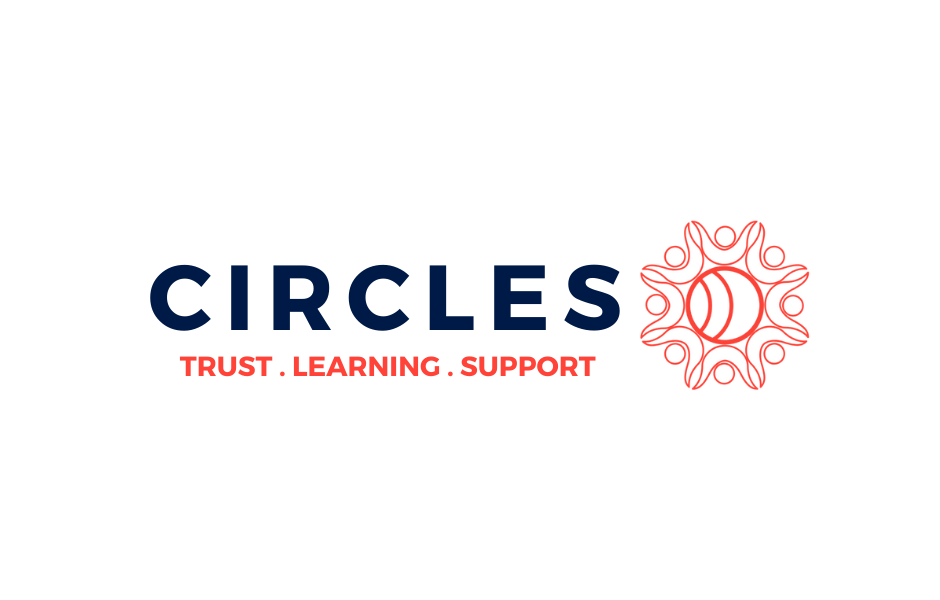The Most Important Work We’ll Never Finish
Sarah McAfee
Director of Communications
Center for Health Progress
@sarahdmcafee
This article first appeared in The Racism Issue of Change Agent.
In 2011, when I started as the Colorado Coalition for the Medically Underserved’s first Director of Communications, I knew exactly what I was doing. The organization’s mission was straightforward—make the health care system better—and I was given freedom and a nearly blank slate.
The coalition’s logo was grainy, the website was coded in beginner’s HTML, and our social media was … not very social. I started from scratch. And for the first four or so years, I came to work every day completely confident I was good at my job. Our organization was thriving and other nonprofits looked to us as leaders. We were at the top of our game. This is the point in the story where I’d normally say, “And then it all came crashing down,” but white supremacy culture is never toppled that easily.
Our staff was all white. So was our board. But the people we said we cared about were not, and we weren’t doing anything to shift power to them. It turns out the “game” we were at the top of was perpetuating white supremacy. Not the hood-wearing, tiki torch-marching type of white supremacy, but the white-as-default, white-as-normal type of casual white supremacy that is so pervasive.
We didn’t realize all of this overnight. A change in leadership meant a change in how we wanted to engage with our community. A new grant meant funding and technical assistance to support our equity learning. And each new conversation with a community leader helped hold up a mirror for us to see ourselves as they did.
I was part of the problem. I had watered down our language to say “race-based bias” instead of “racism” to make readers (i.e., white people) more comfortable. I had developed a series of infographics about racial health disparities that didn’t explain why the disparities exist, leaving readers’ implicit biases to incorrectly fill in the gaps. I didn’t notice that our social media accounts primarily followed other white organizations and people, or that only our white audience continued to grow. Every report, blog post, tweet, and newsletter was all in English.
The more I learned about equity, the more I came home from work feeling like a failure (see: white guilt). But it was good for me, and I found myself grateful for it.
Richard Crews from Radicle Solutions Group, a Phoenix-based equity and systems change consultancy, says racial equity cannot be your public policy until it is your private practice. So we jumped at the opportunity to reinvent ourselves.
WORK WE DID
We made a commitment to our community. We committed to taking direction from them, holding ourselves accountable to them, and supporting their leadership development. To build this multiracial grassroots movement for health equity, we added community organizing as a core operation, and made it the foundation of and motivation for our internal equity work.
We ramped up our learning. Our white board and staff were, and in many ways still are, in very different places in their understanding of racial equity. So we’ve created a wide variety of opportunities to learn and engage. We share articles, role-play responding to racism, debrief current events, attend workshops, and hold learning time on our calendars. Most importantly, as people of color have joined our board and staff, we’ve learned so much from their experiences, leadership, and expertise.
We rewrote our internal policies and processes. We changed how job descriptions are written, where they’re posted, and how we interview, including removing background checks and requirements for minimum education, as both have been shown to be highly biased against candidates of color. The result: a far more racially diverse staff and board. We also rewrote our employee handbook, making leave policies more equitable by looking at which days we consider holidays, how we define “family” for sick time and bereavement usage, and revisiting the accrual schedule. We more carefully choose who we enter into financial relationships with, prioritizing companies owned by people of color and those aligned with our values.
We changed our name. By calling ourselves the Colorado Coalition for the Medically Underserved, we were promoting a deficit-based label, insulting our safety net clinics, and taking a paternalistic approach to our work, telling communities what was best for them and working without their input or consent. All in one name! We became Center for Health Progress in March 2017. Our brand recognition and reputation have never been higher, and our individual donor base has diversified and grown because we’re earning our community’s trust by living our values.
We made substantial, intentional investments of time and resources. Every staff meeting includes focused discussion about an equity topic. We also believe it’s critical to understand that white people and people of color have different roles in achieving equity within an organization, so we create safe spaces for separate conversations. Our white staff meets regularly as a group and one-on-one to challenge each other’s growth, learn to be better accomplices in racial justice, and to dismantle white supremacy within our work culture. The people of color on our staff meet to support and learn from each other, have a safe space to work through the challenges associated with micro-aggressions and racial trauma, build leadership, and identify opportunities to make our organization stronger. This is called “race-based caucusing,” and it’s a powerful anti-racism tool. We have also hired equity consultants who lead monthly training sessions and provide guidance on changing our internal culture and operations. Equity is an explicit priority in everyone’s work plan.
We changed what and how we tell stories. Data on disparities are always accompanied by context about the systemic racism that caused them. A partner organization, the Colorado Children’s Campaign, calls this rule “no naked numbers.” We talk about race as a social construct, historical policies and the generational trauma they’ve caused, and the resiliency of communities of color to survive everything our country and society have inflicted upon them. Our most ambitious project to date was the creation of a graphic novel about the root causes of health inequities—racism, xenophobia, homophobia, poverty, and other forms of oppression. In it, we tie together individual stories, data, and historical context in a way that’s engaging and approachable for a variety of audiences. It’s been highly effective as a way to enter into deep conversation and introspection with people of all backgrounds and perspectives.
We changed our language. We name racism when we see it in all our public commentary. There’s no mincing of words or watering down to make it more palatable. It’s not that race is a factor in the maternal mortality of black women, it’s racism. We explain that if education, money, and power are the primary access points for good health in the U.S. (and they are), and white people control education, money, and power in the U.S. (and they do), then good health is a privilege of whiteness. We’re still working on becoming a multilingual organization, because English language privilege is also tied up in white supremacy culture. We’ve codified all of these language choices into a style guide for staff. This has cemented our place as a thought leader and given us new avenues through which to work toward our mission.
We changed how we define success. It’s not good enough to measure ourselves against metrics that don’t account for equity and inclusion. With guidance from The Management Center, our SMART goals are now SMARTIE goals—Specific, Measureable, Attainable, Relevant, Time-bound, Inclusive, and Equitable. If we sought a 90% approval rating for a program, we’d change it to 90% among each race. If our goal was to recruit 100 new volunteers, we’d change it to 100 that represent the racial makeup of the community we’re asking them to work with.
We’ve broadened the range of issues we comment on. Immigration is a health issue. Criminal justice is a health issue. Transportation policy, conservation, and gun control are health issues. And every one of those issues is a racial justice issue. We now work to increase access to driver’s licenses for immigrants without documentation, march for women’s rights, and write statements on tax policy. We’ve heard from many nonprofit organizations that while they personally care about racial equity, it’s not within their mission to speak out or take action for it. Let me assure you: It is, and it must be. And it will open opportunities for fruitful new cross-issue alliances and collaborations.
We’re still learning. I’m definitely still learning. Not having all the answers is the kind of discomfort we need to keep us moving forward. We’re now about half white, half people of color, for both our board and staff. Six of our last seven hires were people of color. However, only one of our five director-level positions is currently held by a person of color, so there are still substantial power dynamics at play. We’re working on it. And we’re working on much more than just diversifying staff and board, because authentic racial equity work demands it. Making racial equity our private practice and our public policy is the most important work we do, and we’ll never be done. And although our words and actions are more in line with our values now than they’ve ever been, there’s much more hard work, and heart work, ahead. I can’t wait!


